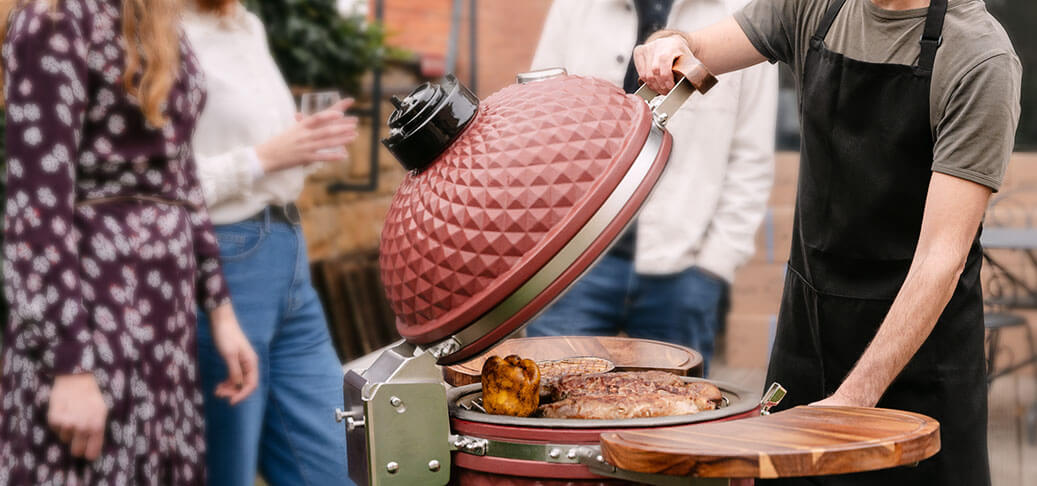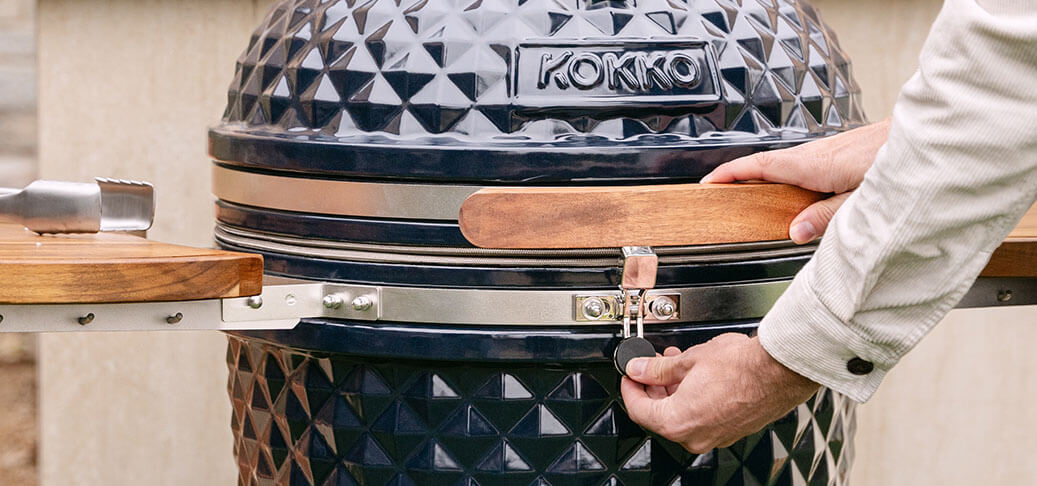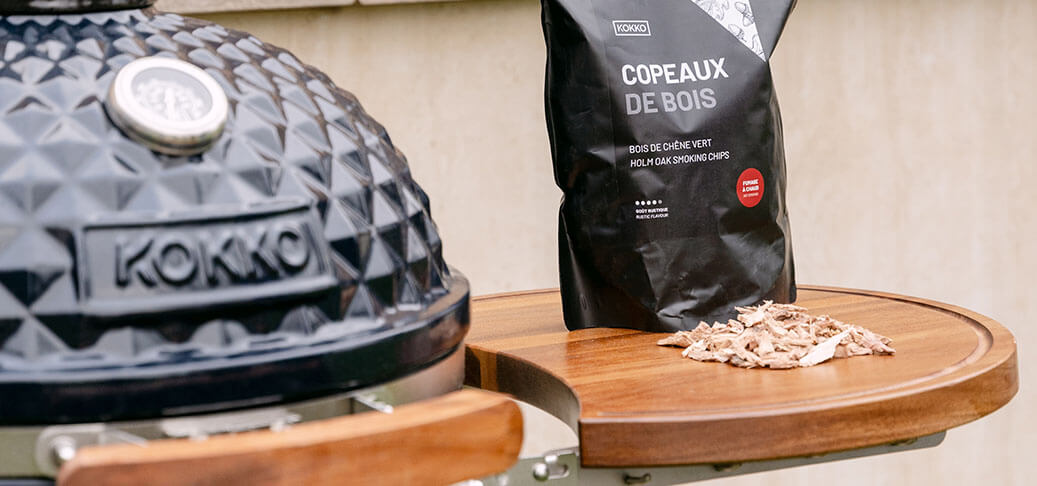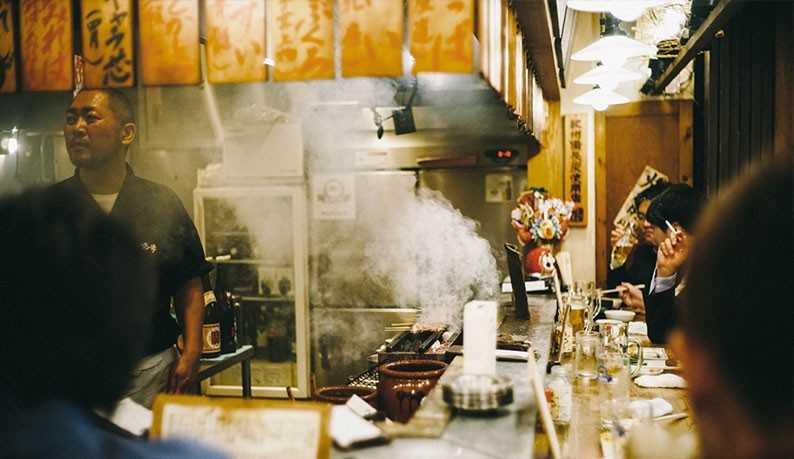
BBQ World Tour #2 - In 2020, Kokko becomes a globetrotter and offers you a "BBQ world tour" to discover the history of grilling, smoking, and roasting through different cuisines. For our second meeting, we're heading to Japan. Put on your gloves, heat up the charcoal, and set up the grills: let's go!
The tradition of barbecue in Japan
Even though the Japanese consume a lot of fish, they are nevertheless fond of meat, especially when it is grilled on the barbecue or more precisely, in Yakiniku. This word, which could be translated into English as "grilled meat" is the preferred method of cooking for the Japanese, whether it is for cooking meat, fish or vegetables.
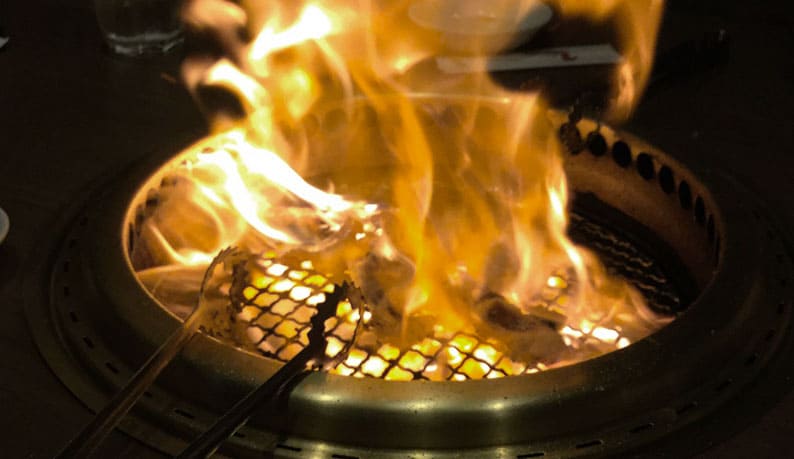
The prohibition of eating meat
However, eating meat has not always been authorise in Japan. Indeed, when Buddhism became the official religion of the country, its consumption became taboo and this, for a very long period, from the Middle Ages until the 19th century! It was not until the Meiji era that meat was reintroduced into Japanese cuisine and beef consumption was then legalised in 1871.
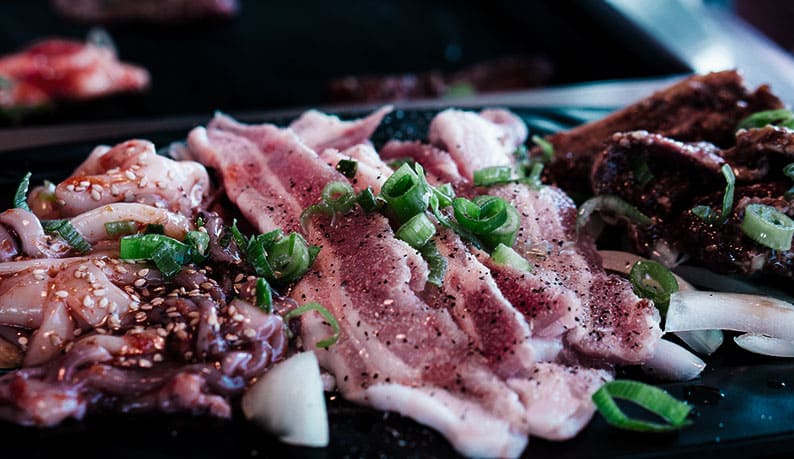
At that time, the term Yakiniku referred to barbecue from Western cuisine. In his book, Seiyo Ryoritsu (Manual of Western Cuisine, in English) published in 1872, Kanagaki Robun describes examples of Western menus. These included a cold meat dish for breakfast, Yakiniku for lunch and dinner.
Yakiniku: Korean or Japanese?
The origin of the Japanese barbecue is disputed. On the one hand, there are those who claim that Yakiniku refers above all to a Korean grilled meat dish. Then, the Japanese would have then reinterpreted it. In the opposite camp, in 2002, a program broadcast on NHK, Japanese public service television, explained that "while some tend to think that Yakiniku comes from Korea, it was born in post-war Japan." Finally, other enthusiasts claim that Yakiniku did appear in Japan but that it was invented by the Zainichi Koreans, that is to say the Koreans living in Japan. Who is wrong, who is right? In the meantime, one thing is certain, is that Yakiniku has become greatly popularised in Japan after the Second World War.
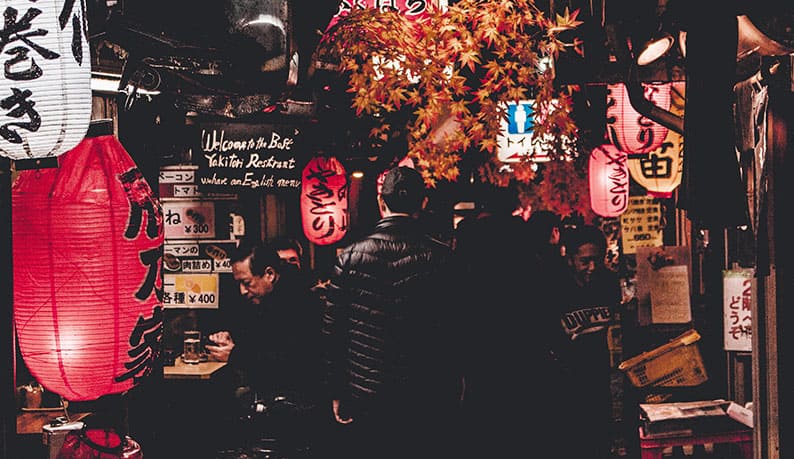
Japanese Yakiniku today
Currently, the word Yakiniku refers not only to the dish of grilled meat, fish or vegetables but also to the method and cooking device.
Traditionally, the Yakiniku, i.e. the grill, is placed above the charcoal in the centre of the table so that each guest can cook their meat, brought raw and marinated, as they wish. But how do you avoid the smoke of an indoor barbecue? An ingenious Japanese company found the solution by creating barbecues with a ventilation system in 1980. In Japan, people gather around Yakiniku both at home and in restaurants.
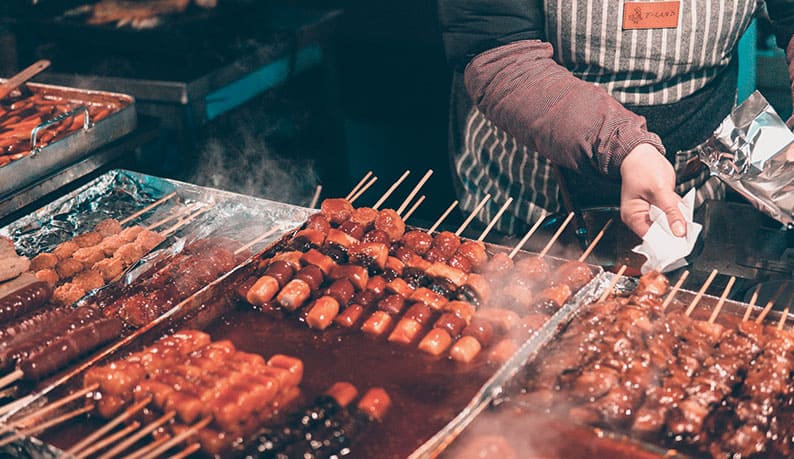
A convivial way to gather around the fire, to enjoy but also to warm up. Organise a winter evening around the BBQ Yakiniku style!
What good food do we eat at a Japanese BBQ?
Traditionally, the preferred meats of Yakiniku are beef and pork but we also find offal and chicken. Cut into thin slices, the meat is marinated beforehand in a sauce called... Yakiniku sauce! The latter is composed of soy sauce, mirin (a sweet rice alcohol), peppers of different kinds, vinegar, onion and garlic. Among the most appreciated pieces, we find the shoulder, the loin, the short ribs, the hanger steak but also the beef tongue. On the pork side, we generally serve bacon or cheek.
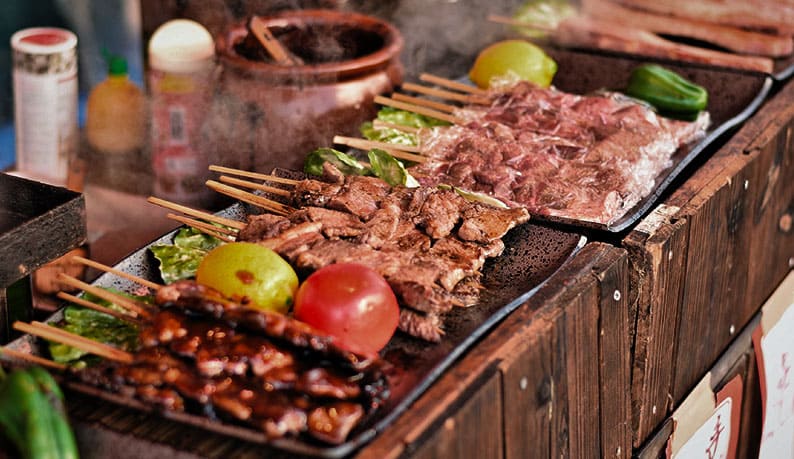
Once grilled, the meat, fish or vegetables can be garnished with a sauce called "tare". There are many kinds and are most often based on miso and soy sauce, but you can also make them with sesame, sake, shallots, sugar, garlic, etc. These dishes are generally served with several "banchan", that is to say side dishes. Among them, we find the traditional bowl of rice but also vegetables and typical recipes of Korean cuisine such as "kimchi", a salad of fermented vegetables to give them a tangy and very spicy note!
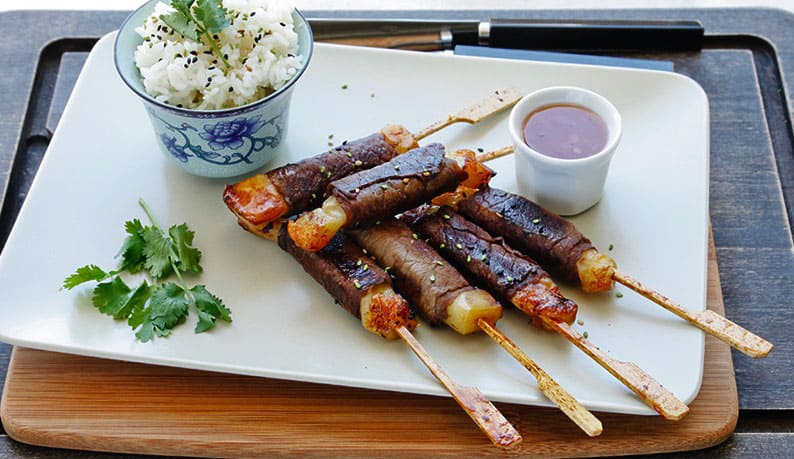
In addition to thinly sliced meat, skewers and "yakitori",
Japanese-style tapas, are also grilled on the Yakiniku.
What's the ideal equipment for a successful Yakiniku?
To surprise your guests and spend a convivial, timeless moment around the barbecue, you can follow one of our traditional Japanese recipes detailed in the articles below.
As for the equipment, here are a few precious ideas to transform your kamado into a Yakiniku:
Stainless steel cooking grid
Stainless steel cooking grid extension
Stainless steel half rack
Cast-iron cooking plate for perfectly even cooking of meats and vegetables
Stainless steel tongs for turning food
Leather gloves
Outdoor filament garland for a starlit atmosphere
Discover our updated yakitori recipes:
Rabbit, honey, and prune skewers
Pineapple spring rolls with orange sauce
Since August 29th was declared the "official Yakiniku day" in Japan in 1993, we hope you won't wait until the end of the summer to grill your yakitoris on your Kokko!
